The document provides a comprehensive overview of image texture, including its definition, types, algorithms, and methods for texture segmentation and classification. It discusses approaches like structured and statistical methods, highlighting tools such as Gabor filters and co-occurrence matrices for analysis. Additionally, the text emphasizes the applications of texture in various fields, including education and technology.


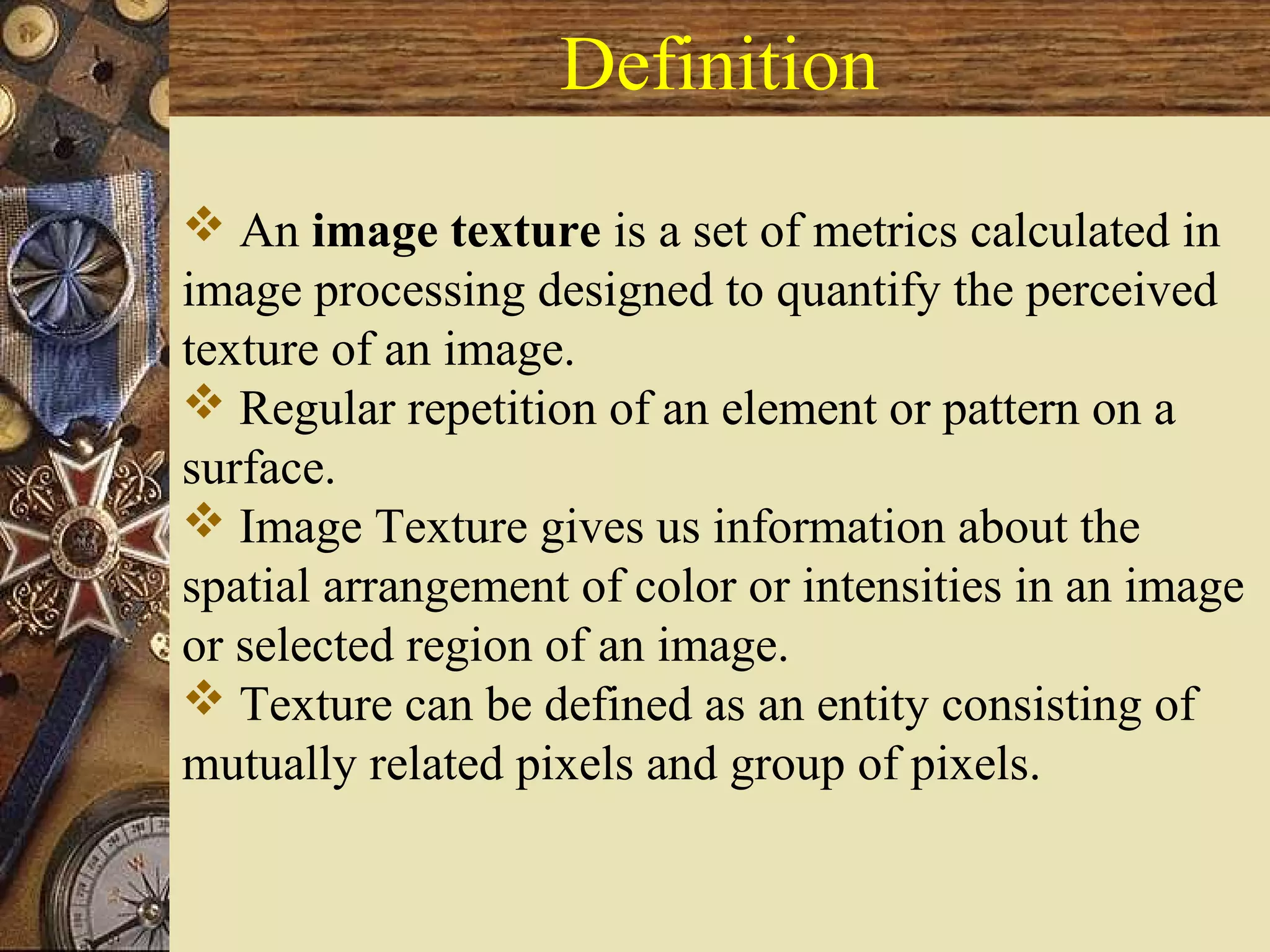
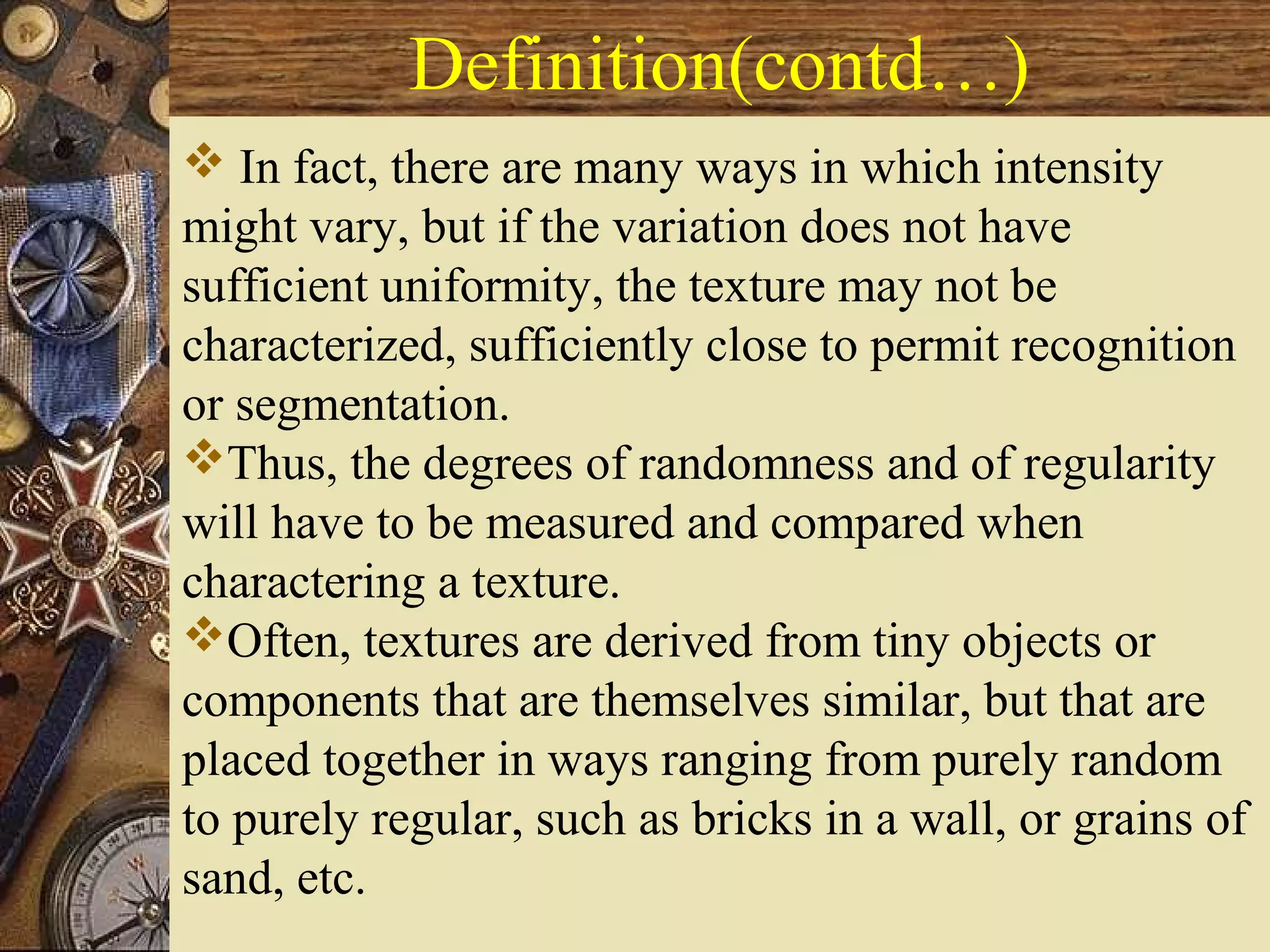
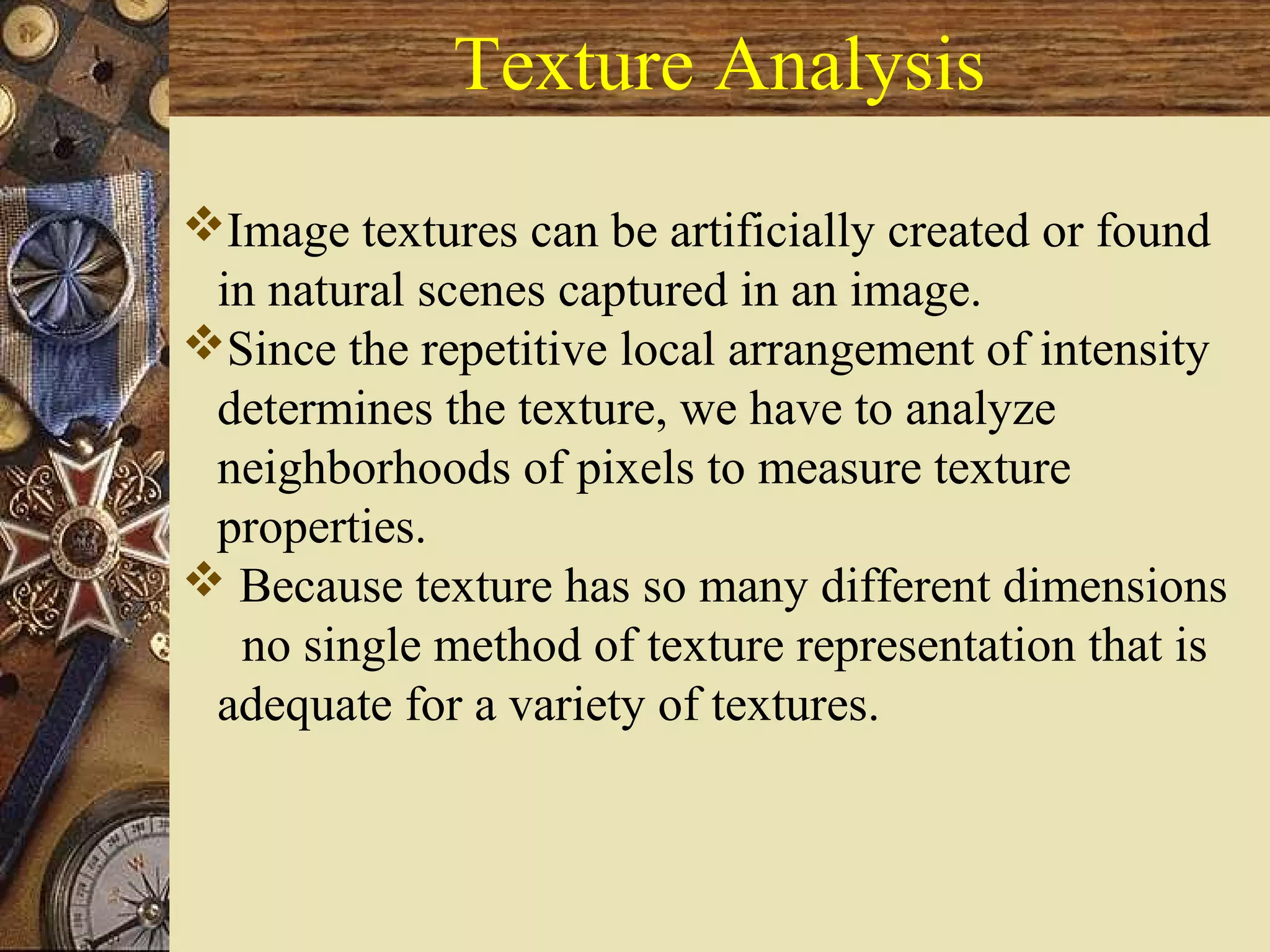
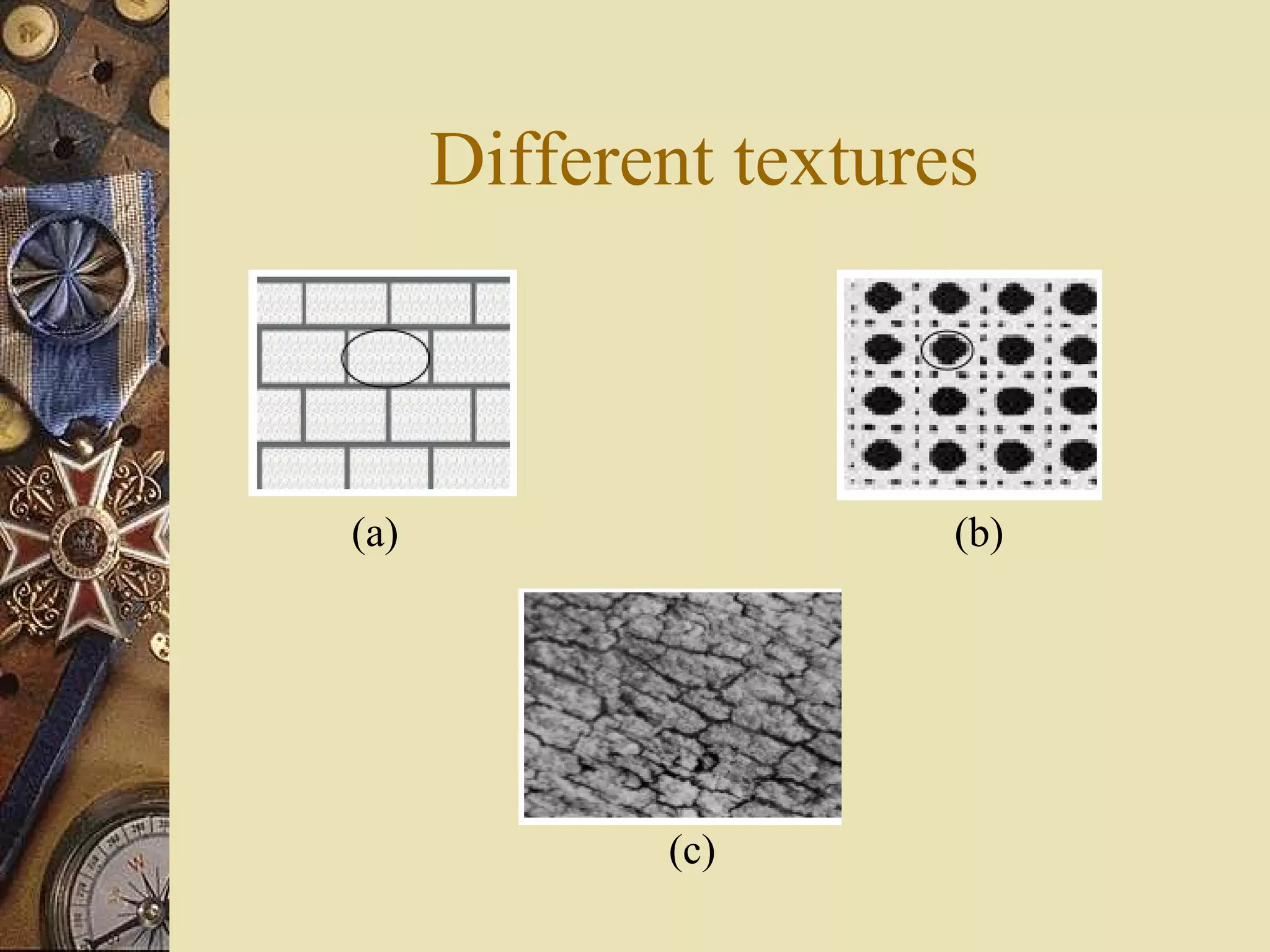




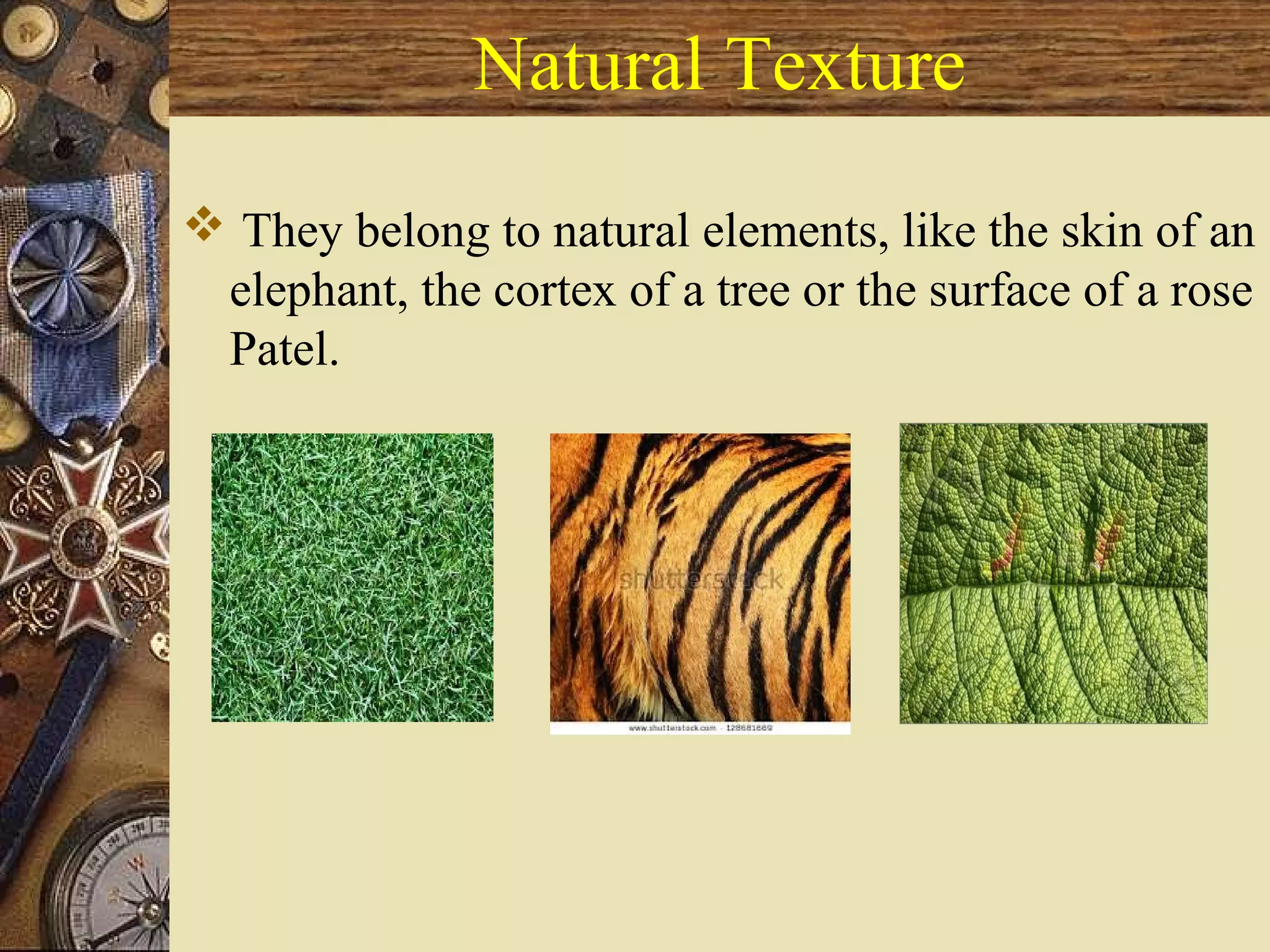





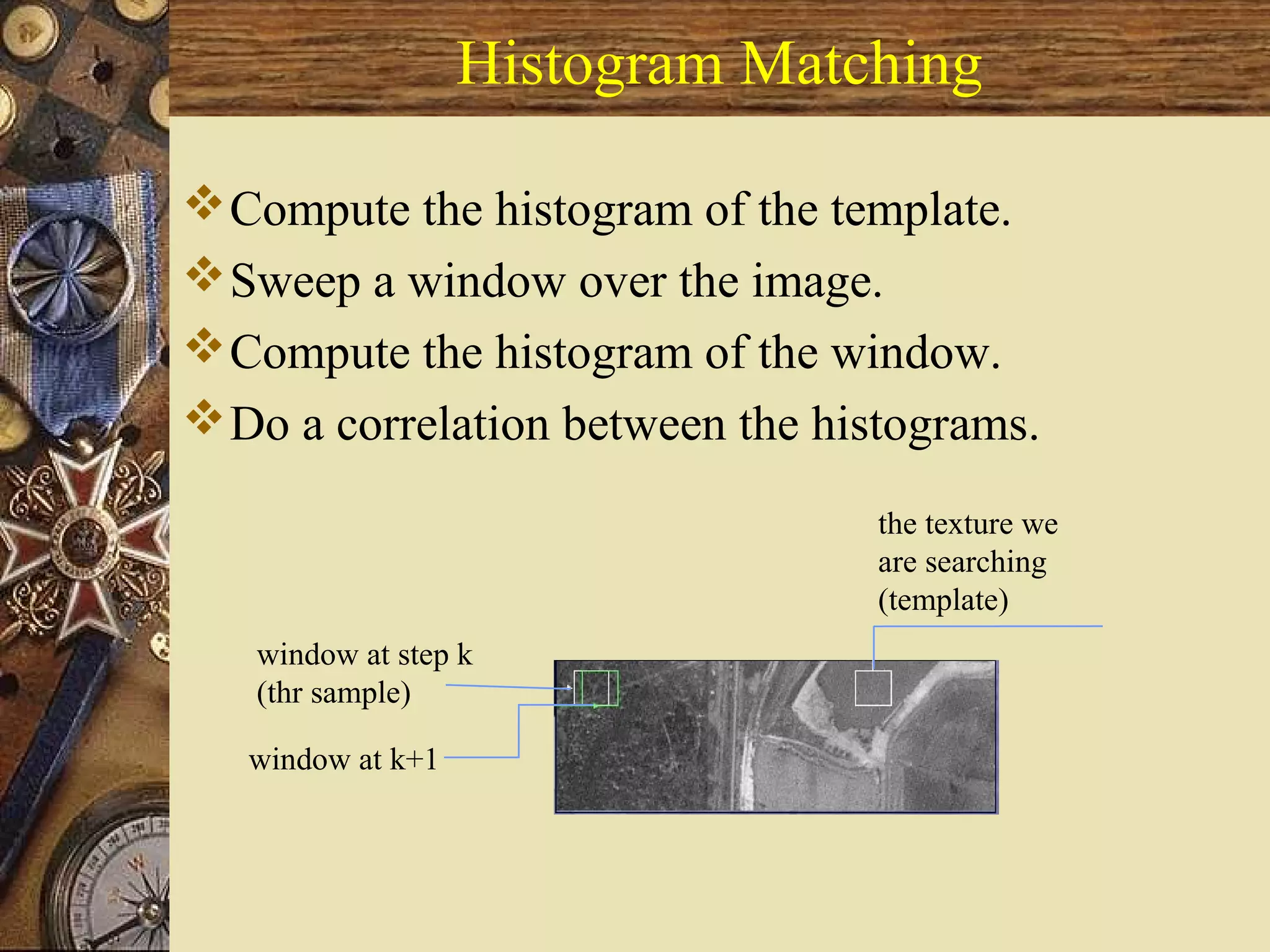

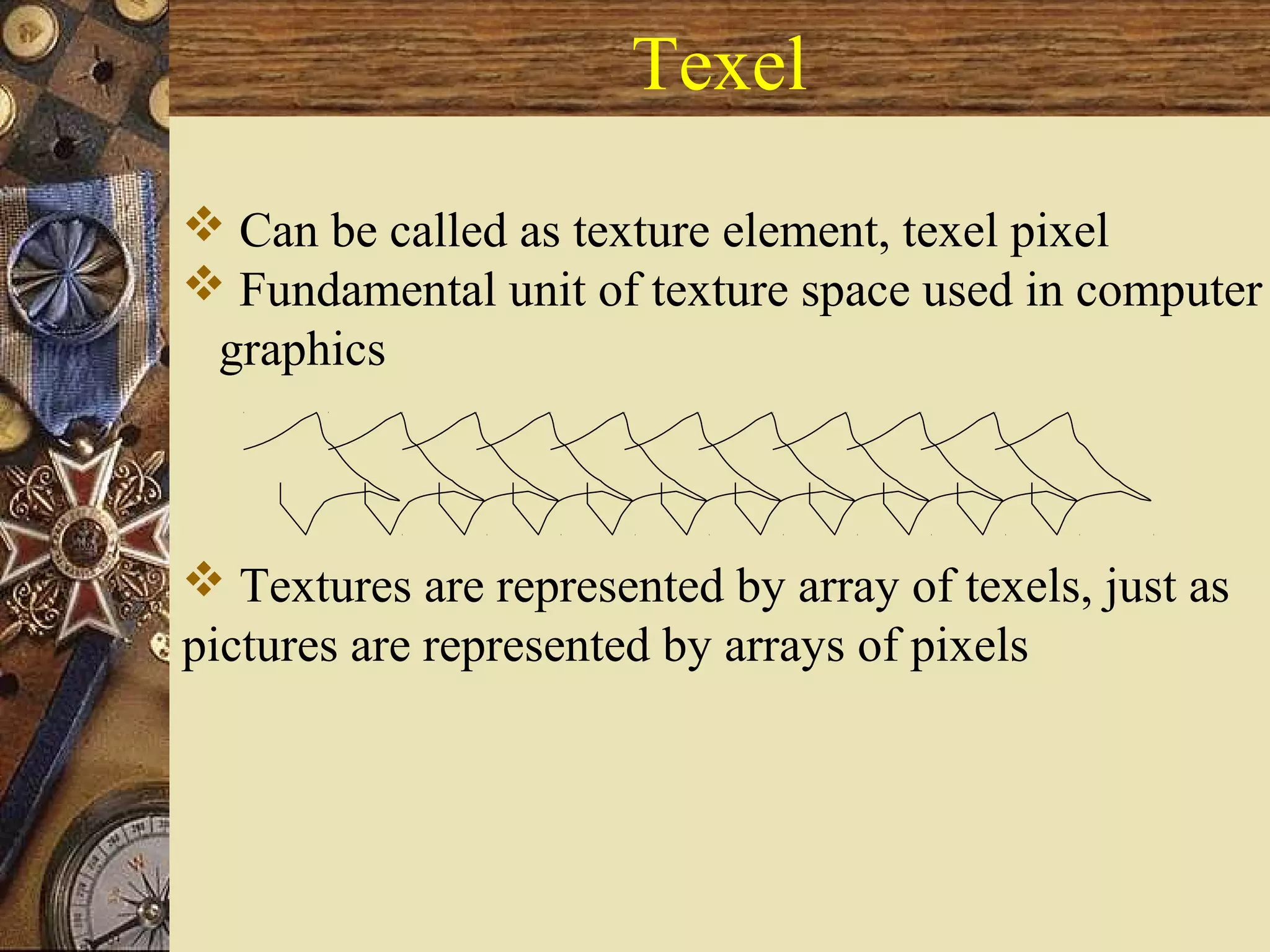


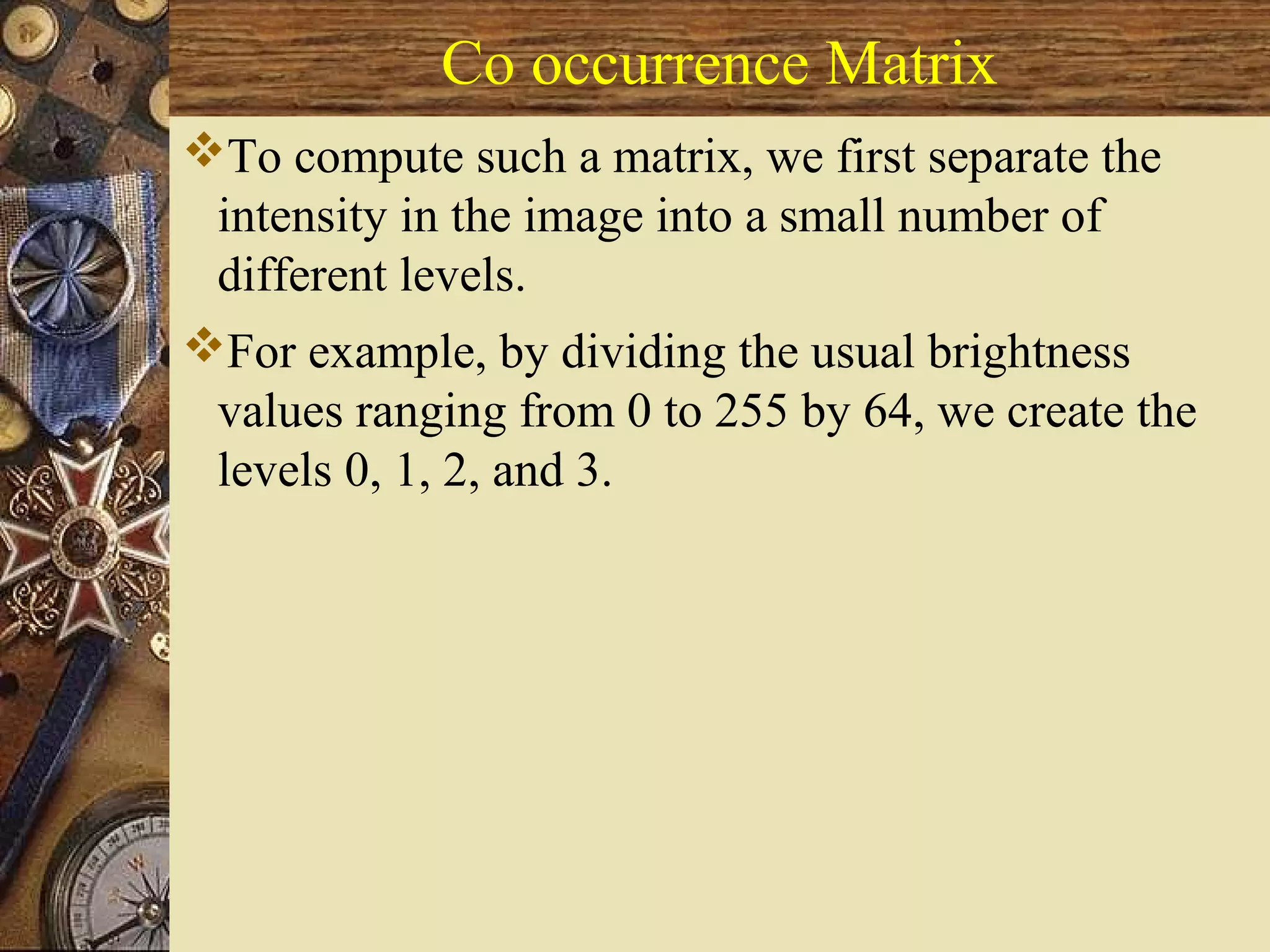




![Laws Texture Energy Measures
Convolving these filters with themselves and each
other results in five new filters.
The masks are generated from the following
vectors.
L5 = [ +1 +4 6 +4 +1 ] (Level)
E5 = [ -1 -2 0 +2 +1 ] (Edge)
S5 = [ -1 0 2 0 -1 ] (Spot)
W5 = [ -1 +2 0 -2 +1 ] (Wave)
R5 = [ +1 -4 6 -4 +1 ] (Ripple)](https://image.slidesharecdn.com/texture-170710202512/75/Texture-By-Priyanka-Chauhan-27-2048.jpg)



